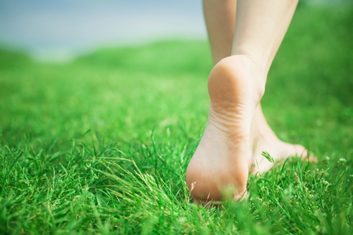
Summer foot health
Summer can be tough on our tootsies. Not only are our feet, which have been hibernating for the winter, suddenly on display, but these warmer months can unearth an array of foot-related problems-think odour, dry heels, blisters and more. Here’s what you need to know about protecting your feet this summer.
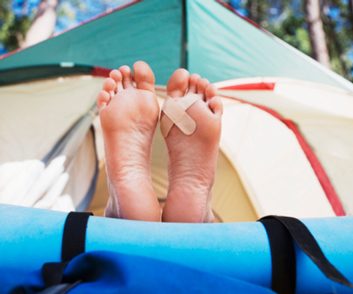
Blisters
Strappy new sandals can come with painful reminders: blisters. “Blisters are caused from friction with shoes. If you’re wearing an ill-fitting shoe while doing a lot of walking and there’s rubbing on part of the foot, a blister can form,” says Dr. Hartley Miltchin, a Toronto podiatrist. A blister (that ‘pillow’ of sterile fluid between the shoe and foot) is how the body protects the foot’s underlying structure, he says. “I don’t recommend popping them because a burst blister can be susceptible to infection.” Instead, cover it with a Band-Aid and let it heal on its own, which can take five to seven days.
Prevent it: New shoes? Wear them around the house first to break them in or on short walks only. “If you’ve got a longer walking trip, carry some Band-Aids with you. Put a bandage over the sensitive area to protect from some of the friction,” says Dr. Miltchin.

Burns and lacerations
With your feet on display so much in summer, they’re more exposed to the elements, including the sun’s rays and sharp objects. “The skin on the top of our feet is extremely sensitive and very susceptible to painful sunburns,” says Dr. Miltchin.
Prevent it: Along with spreading sunscreen on the tops of your feet, cover your feet outdoors at all times. Wear sandals when going outside-stepping on glass or wood splinters can cause cuts and possible infections, and if you’re lake or ocean-bound, wear water shoes to prevent cuts from sharp rocks and shells. Poolside? Wearing sandals or flip-flops will also help protect your feet from picking up a fungus (which breed in wet, warm environments).
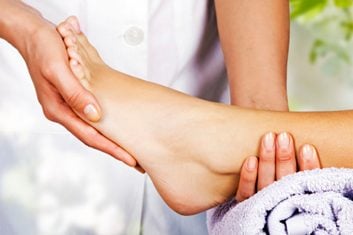
Foot odour
Embarrassed to take off your shoes because your feet smell? “People think fungus causes odour but the odour is actually caused by bacteria. Our feet sweat even more so in the summer and that attracts bacteria, which causes the smell,” says Dr. Hillary Brenner, a New York-based podiatrist. In the summer, each foot can sweat up to 8 oz. of moisture a day-and the higher the moisture, the more chances of foot odour.
Prevent it: Rotate the shoes you wear to give each pair a chance to dry out. And while you can try products such as the SteriShoe, an ultraviolet shoe sanitizer (a.k.a. “dry cleaning” for your shoes), Dr. Brenner also suggests spraying your shoes with an aerosol underarm deodorant (let them dry before wearing again).
As for your feet, wash them regularly, and try using an antifungal foot soap with teatree oil (which helps kill the bacteria). “The main thing to do is lower the moisture between your feet and shoes,” adds Dr. Brennan.
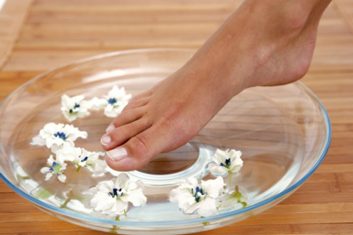
Cracked heels
“We carry most of our weight in our heels and we often don’t moisturize them often enough with effective products,” says Dr. Miltchin. The skin on the soles of our feet is also about 20 times thicker than elsewhere on our bodies. “Calluses can build up around the rim of the heel and if left long enough, you can develop ‘fissures’ or cracks which can become painful and possibly infected,” he adds.
Prevent it: Use a heavy foot cream specifically for feet such as a Shea or cocoa butter. Dr. Miltchin also suggests this regular treatment: soak a pumice stone (a porous, brick-like stone often made of lava rock) along with your feet in a warm basin of water with a few drop of dishwashing liquid for 10 minutes. “Then take the stone and gently rub off the callusing on the bottom of the foot and especially the heels to remove the dead layers of skin. Then use a good moisturizer on them after,” he says. (If your feet are really bad, Dr. Miltchin suggests applying a thick cream to the heels, wrapping your feet in clear cling wrap and then putting socks on overtop to soften your feet overnight.)
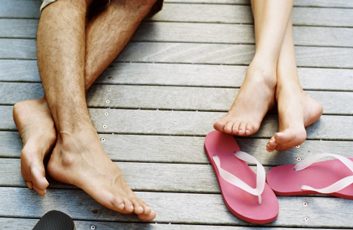
Arch support
We do love the comfort and convenience of flip-flops don’t we? But the problem is how long they’re worn. Not only do flip-flops not provide any structural support around the foot, but they also don’t offer any arch support, which can lead to pain and fatigue.
Prevent it: “Wearing flip-flops is like being on a diet-when you’re on a diet you count calories. When you look at your shoes, you count the hours in which you should wear them,” says Dr. Brennan. “Flip-flops should be worn for one to three hours at a time, and mainly at the beach or a barbecue.”
Also, when shopping around for a flip-flop, look for one with a bit of structure. “The toe box [the area underneath the toes] shouldn’t be too rigid or too flexible-you want to be able to move it just a little bit,” says Dr. Brennan. “Then in the arch, you want a thicker arch and a wide chunky heel.” Dr. Brennan’s favourite? FitFlops or the Croc brand of flip flops.
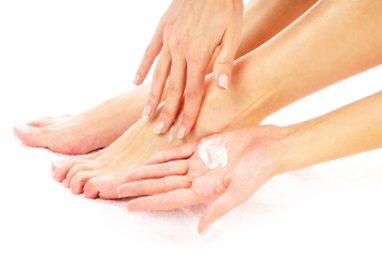
Toenail discolouration
Maybe you’re a winter runner with a blackened toenail? Or perhaps your nails are looking a little thick and possibly yellowed. While a blackened toenail is often caused by a blood blister under the nail (caused by the banging or rubbing of the toe against your shoe), thick, yellowed toenails are often indicative of a fungus in the nails. While it’s best to leave the blackened nail (a new, healthy nail often grows underneath and then the damaged nail falls off), yellow nails need to be treated either with an at-home product or at the podiatrist’s office.
Prevent it: Properly fitted shoes are one of the best ways to prevent blackened toes, so find a shoe store that offers foot assessments and fittings. To prevent nail fungus “consider using an antifungal powder or spray on your feet in the morning to keep them fresh and dry,” suggests Dr. Miltchin. Keep nails neat and trimmed. It’s also a good idea to stash your own box of tools at your favourite nail salon (many salons offer to do this for you) or bring your own clean tools.
Related:
• Are sandals wreaking havoc on your health?
• 6 ways to make your feet feel amazing
• 6 ways your shoes are hurting your feet
